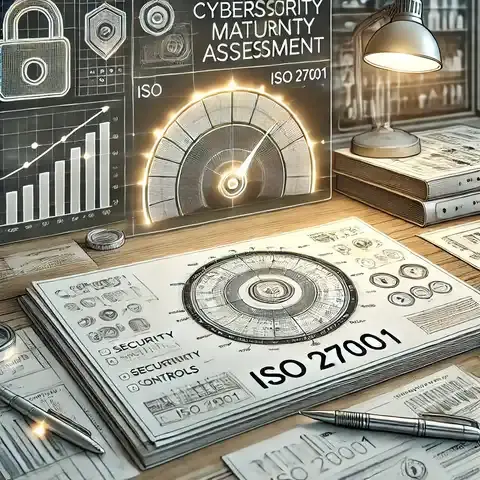
Preparing an ISO 27001 Cybersecurity Maturity Comparison
Cybersecurity is no longer a purely technical concern. In today's hyper-connected world, it's also a legal one. Organizations operate under an intricate web of national and international laws governing how they collect, store, transmit, and protect data. Understanding these laws is vital—not just for legal compliance, but for building trust with customers and avoiding costly litigation or criminal charges.
| Law/Framework | Region | Key Points |
|---|---|---|
| GDPR | EU | - Data protection & privacy rights - Breach notification within 72 hours - Heavy fines (up to €20M or 4% of global revenue) |
| HIPAA | USA | - Protects healthcare data (PHI) - Applies to providers, insurers, etc. - Requires encryption, access control |
| CFAA | USA | - Criminalizes unauthorized access - Requires clear authorization for pen testing |
| NIS2 Directive | EU | - Applies to digital infra & critical sectors - Stronger risk & supply chain security - Mandatory incident reporting |
| Cybersecurity Law | China | - Local data storage (data sovereignty) - Export assessments for sensitive data |
Imagine a hospital that suffers a ransomware attack, and sensitive patient data is leaked. Beyond the technical implications, the institution is now liable for violating health data privacy laws. The breach may trigger investigations by regulators, lawsuits by patients, and possibly criminal charges if negligence or non-compliance is proven.
Legal frameworks create accountability. They define what is acceptable and what isn't. They establish obligations and penalties. For blue teams (defenders), these laws shape cybersecurity policy and operations. For red teams (offensive security or ethical hackers), they draw a line between ethical testing and illegal intrusion.
Here are the foundational laws and frameworks that affect cybersecurity operations globally:
Passed in 2016 and enforceable since 2018, GDPR is perhaps the most comprehensive privacy regulation in the world. It applies not only to companies within the EU but to any organization that handles EU residents' data.
Key Elements:
Use Case:
A U.S.-based SaaS company with European customers failed to implement proper access controls. When a breach exposed personal data, the EU fined the company €8 million for non-compliance with GDPR’s security and notification requirements.
HIPAA regulates healthcare data in the United States. It sets strict standards for protecting personal health information (PHI), with civil and criminal penalties for violations.
Use Case:
A healthcare provider emailed patient records to the wrong recipient. Despite no hacking incident, the provider was fined $125,000 for poor data handling and failure to encrypt sensitive emails.
This 1986 law criminalizes unauthorized access to computers and networks. Originally aimed at hacking, CFAA has broad applications—including overreach controversies.
Real-World Scenario:
In the landmark case United States v. Aaron Swartz, an internet activist was prosecuted under the CFAA for mass-downloading academic papers. Although Swartz had access to the database, prosecutors claimed he exceeded authorized use. The case ignited a debate on what “unauthorized access” really means.
For red teamers, the CFAA serves as a red flag: always obtain written authorization before conducting penetration tests or vulnerability scans.
Replacing the original NIS Directive, NIS2 (as of 2024) enhances EU-wide cybersecurity standards. It imposes stricter obligations on digital infrastructure operators, including mandatory risk assessments, incident reporting, and supply chain controls.
China's 2017 cybersecurity law emphasizes data sovereignty, requiring companies to store sensitive data locally and undergo security assessments before exporting data abroad. This impacts multinationals doing business in China or collecting data from Chinese citizens.
Meet Arjun, a penetration tester hired by a financial institution to assess their internal network. During the test, Arjun finds an old FTP server filled with sensitive financial data—completely unsecured. He documents the vulnerability and recommends decommissioning the server.
But here's the catch: without a clear Statement of Work (SoW) and Rules of Engagement (RoE), Arjun might be at legal risk. What if that server wasn't within scope? What if he accidentally accessed customer data?
Thanks to proper contracting and compliance awareness, Arjun's actions were protected. But in another case, a red teamer in a similar situation was sued for breaching privacy laws. The line between ethical hacking and illegal intrusion can be razor-thin.
Lesson: Legal frameworks are't just paperwork. They're shields that protect professionals—when used correctly.
Cybercrime knows no borders. In response, governments collaborate via:
In many jurisdictions, failure to comply with cybersecurity regulations doesn't just result in fines—it can lead to criminal charges, especially in the event of data breaches or willful neglect. CEOs, CISOs, and IT staff can be held personally accountable.
Companies should conduct regular audits, stay updated on evolving regulations, and foster a culture of legal awareness among technical staff.
Cybersecurity professionals wield immense power. They can unlock systems, monitor traffic, and influence organizational decisions. But with great power comes great responsibility—to stay within the legal and ethical boundaries defined by society.
Legal frameworks aren't roadblocks. They're guide rails. They exist to protect users, organizations, and even the cybersecurity professionals themselves.
In the world of cybersecurity, ignorance of the law is not a defense. Understand the frameworks, follow the rules, and you’ll not only stay out of trouble—you’ll help build a safer digital future.
Never test without written authorization!